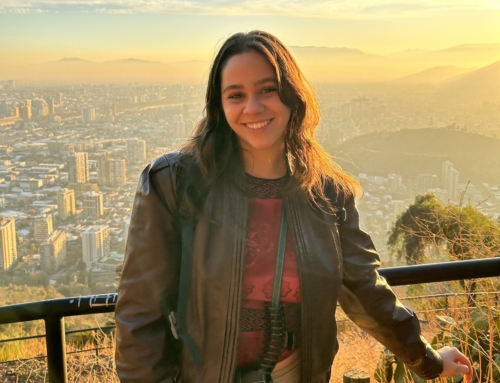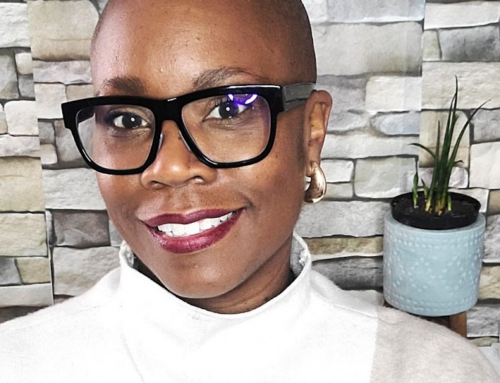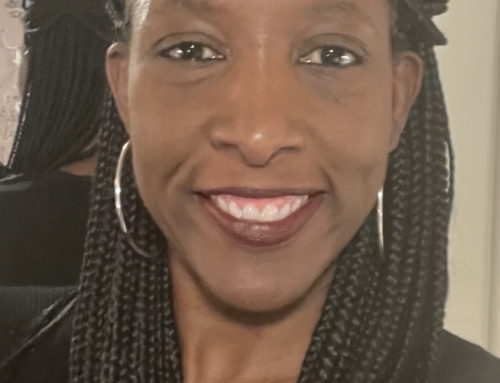By Keith Lamber
English Teacher
This year has been, to say the very least, a roller coaster. There’s been some good news: child mortality rates are declining all around the world, tremendous progress has been made against viruses and diseases, and believe it or not, the global economy is growing. Still, heated debates about policing and racial justice, the frequency of violent acts being perpetrated across our world, the resettlement of refugees from war-torn nations, as well as a fairly divisive political climate, illustrates that our world is in a state of transition, growth, and learning.
 Without a doubt, there’s going to be a lot more on the minds of the students passing through our classroom. Social media spreads strong opinions, cascades of data, first-hand accounts, and to-the-minute updates covering every inch of the globe, that both serve to inform, deceive, and overwhelm the consumer. Our students are trying to figure out how to navigate these rough waters, and their teachers are charged with the facilitation of that journey. But what if we’re not quite sure how to best address, encourage, and facilitate exploration into these issues? We are, after all, just as human. How do we hold up the institution of inquiry and fair expression when we are deep in the struggle ourselves?
Without a doubt, there’s going to be a lot more on the minds of the students passing through our classroom. Social media spreads strong opinions, cascades of data, first-hand accounts, and to-the-minute updates covering every inch of the globe, that both serve to inform, deceive, and overwhelm the consumer. Our students are trying to figure out how to navigate these rough waters, and their teachers are charged with the facilitation of that journey. But what if we’re not quite sure how to best address, encourage, and facilitate exploration into these issues? We are, after all, just as human. How do we hold up the institution of inquiry and fair expression when we are deep in the struggle ourselves?
Recently, I sat down with Joe Lesiak, LCSW, to discuss these matters, head on. Lesiak has spent the past fifteen years working in education in various capacities, a high school social worker with a BA in Psychology, Master’s in Social Work, and a teaching certificate in Industrial Arts education. Reflecting upon his counseling and support work with students and collaboration with other educators, Lesiak feels the support systems and stability provided by schools is absolutely essential to student confidence and success during difficult times. Our ability to “hold the line” even in the face of our sometimes “topsy-turvy” world will be the glue that ultimately holds the ship together.
What should we expect from students this year? What should we keep an eye out for?
I would say that their primary goal is going to be safety: physically and emotionally. They need to have some sense of stability
Our students can’t avoid these complicated and potentially destabilizing issues—they populate their social media feeds daily. And whether or not they explicitly express concern, Lesiak feels students are internalizing a lot more than we imagine. They feel the uncertainty on the planet, and upon their return to the school, they will be craving some ordinance of stability, consistency, and safety. “And that safety—how that’s defined—is safety in a consistent routine, even if it is not yet the perfect routine: in the home, in the community, in the town, in the school. Especially the younger they are, safety is going to be the most important thing . . . and that they can have confidence in the adults that will keep them safe. We can understand that there are structures within our society—even our very school systems—that are in flux, and can be improved upon, and yet we can still provide a consistent structure for students to rely on,” says Lesiak.
In the classroom this fall, educators are going to want to pay extra attention to changes in behavior and uncharacteristic unease. “Almost all kids are either directly or indirectly affected by the low-grade trauma of poverty, race, gender . . . any variety of challenges,” says Lesiak, “then you add these pressing social issues put forth by the media, put forth by concerned communities . . . all while the students are attempting to form their identities as people in this world. It’s a lot for kids to handle.” Some of the potential reactions to such stress will manifest in students differently, whether it’s “depression, obsessions, oppositional defiance, conduct disorder, challenges with attention and focus . . . those could be symptoms,” he adds, “uncharacteristic lack of motivation is common, hopelessness, as is helplessness.” Paying close attention to these changes in our students is an essential step to connecting them with the support systems your school already has in place.
How much should we dive in?
A high school social studies teacher might want to immerse their class into the history and social constructs that have attributed to our world’s current political climate. An English teacher might see the plethora of issues as the perfect fuel to ignite an upcoming debate unit. Whenever social issues match classroom objectives, some educators will lunge at the opportunity for such authentic learning experiences. And yet, due to the very personal and sensitive nature of the issues being presented, many might be understandably hesitant about diving in so readily. A student might bring up a tough issue this year and feel completely ready to discuss it, but this doesn’t necessarily mean everyone in the classroom will be equally prepared. Teachers must be incredibly mindful of the emotional state of their classroom, as well as their own.
You don’t want to deny that it’s going on. You don’t want to ignore it, because it is our world. I think the difficult position is how to explore it without reinforcing that this child is going to be determined by it or get sucked up into it. That is a real key. So on one hand, let’s recognize this situation that not only this one student experiences, but recognize that all of them do, regardless of race, gender, age. . . . The truth is, we’re all in this together, and we need to figure out how to move forward together. Our systems generally sort us out into ‘who’s right’ and ‘who’s wrong’ . . . that’s our judicial system. We need to go beyond that way of thinking. Rather than saying, ‘no, we were born into this situation,’ we move toward, ‘how do we go about changing it?’ Because I don’t think there are many kids that want to be unfair. Fairness to children is really important.
Allowing students the time to discuss these issues directly, with teacher facilitation, can be incredibly empowering. “I think it’s the best learning situation possible,” says Lesiak, “But again, from my point of view, it’s that the two individuals (in the discussion) are faced with a situation. They are not faced with the other person. They are faced with a situation . . . and the challenge of how the two of them will go forward from here. Together. You gain power by having the person next to you, with you in the struggle. Teachers can foster that environment: this looks like a bad storm, but we’re going to make it through and my teacher, I know, is going to be there for me.”
And still, appropriateness in the classroom will also depend on the comfort of the individual educator, too. Lesiak recommends we pay close attention to our own emotional states in relation to the issues we’re considering for the classroom. “Teachers want to pay attention to their own physiological response to whatever the topic is: Are you getting uptight? If you’re uptight, and you feel yourself tensing up—your shoulders tensing up, your heartrate . . . these are indicators that this might be a danger zone for the teacher. And if you don’t hold that even, if you are not aware of what’s going on in your body, then the kids are going to pick up and read that. And they’ll know that this is a danger zone, too,” advises Lesiak. Not only should we be mindful of our own anxiety around the subject matter, but we should pay equal attention to our excitement. Although teacher passion is infectious, it again does not automatically mean the rest of the class is intellectually and emotionally ready to engage.
What if a teacher wants to engage, but is honestly uncomfortable?
Lesiak says that “teachers need their own support systems, as well . . . to get other points of view.” This is where either formal or informal teacher mentors could be incredibly important in the school system. When the terrifying question of “what do I do?” rears its head. “You need to have somebody that you can trust, that’s not going to judge you.” Using this resource, whether a peer or a seasoned veteran, can help guide you to more confident decision making for your class.
The reality is, we don’t know what things are going to look like in 2 years, 3 years . . . nobody does. But for the sake of students sometimes, we need keep the ship steady. Think of a ship’s captain. You might be in the middle of the worst storm you’ve ever seen. The ship’s captain can’t panic and say, ‘Ah! What are we going to do?’ No. The ship’s captain says, ‘Here’s my training . . . I’ll rely on my training, and with support of my school community, this is what we’ll do.’
This sort of response relies a lot on teacher teams. School community becomes that much more important—creating a space where you feel like you have people you can rely on and lean on for advice and support. “I think we have to learn how to trust people. So you have people you can talk to honestly, and they’re not going to judge you, not going to evaluate you.” Rely on each other, and make these decisions as a team. No one needs to go it alone.
How could administrators support this work?
“I think going into the new year, I would want to acknowledge to the student body—and to the teachers—that these are difficult times. We’re trying to make our way. But we don’t want to abandon where we’ve been, and how far we have come . . . not knowing where we’re going. That we want to make sure that we release from some of these systems that we know are not working, and adapt new experiences. Our entire society might feel like it’s turning upside down. But that’s no reason to give up. That’s no reason to not learn.” In fact, education can be a route to finding new answers to some of our world’s toughest questions. Students need to feel like they can contribute to something tangible that will strengthen them on their journey, despite even the most overwhelming odds. “Can I immediately change all the things I don’t like about the world? No. Can I immediately change the movements that are supporting them? No. Can I read today? Can I do my best? Can I treat the person next to me with respect? I can do that.”
As far as academic structure and culture, Lesiak suggests we begin to consciously build in the time for addressing tough issues.
One of the major difficulties for teachers that I would identify is how these kinds of discussions require personal time . . . relationship building. And if you’re completely stuck on your curriculum and what you need to present, you’ll be more likely to not ‘go there’. But that’s a great moment to build relationships. I think administrations and districts have to come in and say, ‘no, if we don’t build these relationships, then we’ll never really get to the content in a meaningful way.’”
Ultimately, students need to know that we are in the struggle with them. That we are there to support them. That we are open to hearing them. That we validate their feelings, thoughts, ideas, and offer them routes to progress. “Do we know the answer? We don’t. But we’re going to go forward to find the answer with you,” says Lesiak, “And you think that your voice doesn’t matter. But we need that voice. And that we as educators will create an environment where you can share what you know . . . where you can speak your truth. Without that, we have no way of finding our way into the future.”
This article originally appeared in Education World.






Leave A Comment